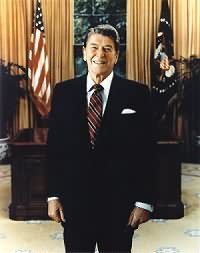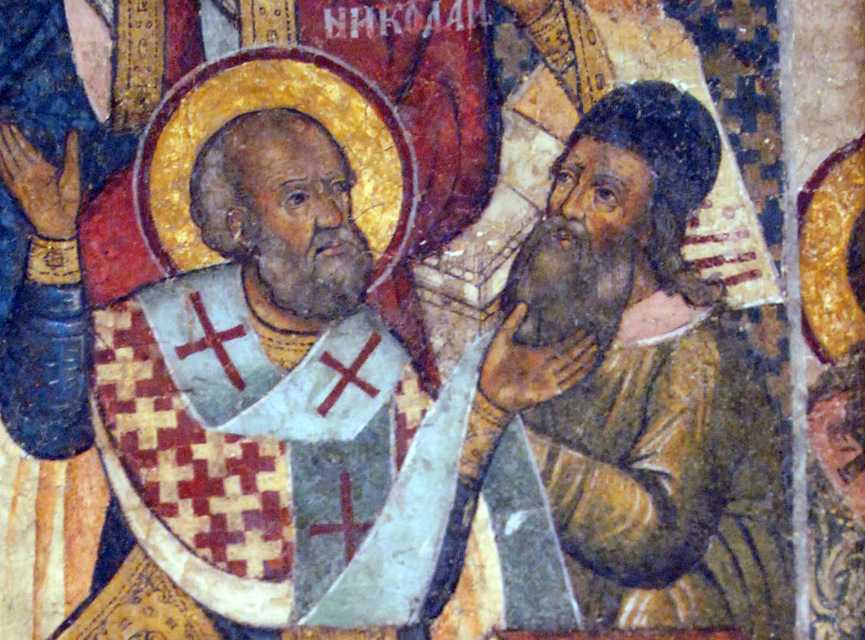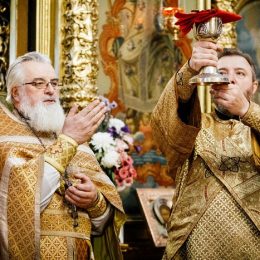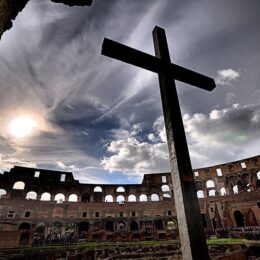 by Mark Tooley –
by Mark Tooley –
Jim Wallis’ Evangelical Left Sojourners has helpfully reminded us, amid all the hagiography about Ronald Reagan on the centennial of his birth, that the Religious Left despised him. Some Religious Leftists doubtless still do.
Sojourners magazine editor Jim Rice recently recalled Sojourners’ 2004 observations about Reagan upon his death. “Reagan’s policies were disastrous and destructive.” After all, “poverty worsened at home and abroad, he spent hundreds of billions of dollars on the largest peacetime military buildup in history, including $80 billion (and counting) for the fantasy of Star Wars and tens of billions for first-strike-capable nuclear weapons.” Reagan also reputedly “ignored” the AIDS epidemic. He instigated “U.S. wars in Central America” that included right-wing “death squads” and killed tens of thousands, including Jesuit priests.
According to Sojourners lore, “Reagan’s policies worked against the interests of the poor and marginalized and further enriched the wealthy and powerful.” His “most destructive legacy could very well be the mania for ‘deregulation’ that he unleashed, starting with his declaration in his first Inaugural address that ‘Government is not the solution to our problem. Government is the problem.'” Of course, Reagan’s passion for deregulation led in a straight line to the “tsunami that swamped Wall Street” in 2008. Reagan was personally “likeable,” Rice admitted. “But don’t let the revisionists whitewash one of the most damaging presidencies of the 20th century and the dangerous legacy it left us.”
In the stroll down memory lane, it could also be recalled that Jim Wallis’ Sojourners effusively praised various Soviet surrogates around the world, including Nicaragua’s notorious Sandinista regime. And Sojourners, then as now, wanted U.S. unilateral disarmament. If the Religious Left view had prevailed in the 1980s, hundreds of millions might still live under a Communist police state. Of course, Rice instead suggests that Reagan’s “militaristic approach helped bolster the hardliners in the Soviet Union and forestalled rather than caused the inevitable downfall of the USSR and the end of the Cold War.”
At least consistent, Rice essentially rehashed the Religious Left warnings that issued forth almost immediately after Reagan’s 1980 election. In 1981, a few months after his inauguration, the National Council of Churches (NCC), then a far more important organization than now, dispatched a “Message to the Churches” ominously called, “The Remaking of America?” It warned that the new administration threatened the “vision of America as the model and embodiment of a just and humane society.” Reagan’s agenda was “contrary to the best insights of both Christian faith and the national creed.”
Allegedly, Reagan was “giving away the public inheritance to private entrepreneurs,” capitulating to “sheer naked, untrammeled greed.” He was also exchanging concern for “human rights” for a “selective preoccupation with ‘terrorism,'” which the NCC helpfully put into scare quotes, and which recalled the “hysteria of the McCarthy era.” Reagan was reviving a “distorted vision of the bipolar Cold War world,” and a dangerous obsession with Communism. The NCC worried that Reagan proposed to “make America ‘Number One,'” which it found truly frightening. In the heartless Reagan vision, “compassion is a weakness,” and government only a necessary evil to “protect privilege from assault.” Reagan wanted our nation to be “principally” an “Empire” guided by “Manifest Destiny,” with a “mission to extend its power and commerce throughout the continent, the hemisphere, the world.”
In 1986, the NCC’s chief celebrated that the Democratic Party’s new majority in the U.S. Senate at least could “control the damage the Reagan Administration has done to the fabric of our country.” Of course, the Mainline Protestants who comprise most of the NCC’s supposed constituency voted by 60 percent or more for Reagan’s reelection in 1984. Evidently they were also lacking in “compassion,” despite decades of attempted guidance from the NCC.
United Methodist Bishop James Armstrong would become NCC president in 1983. Only days after Reagan’s 1980 election he bewailed: “People voted their self interest instead of the social principles of the church. It looks like United Methodists with everybody else forsook their Christian idealism at the ballot box.”
Another panicked United Methodist bishop similarly exclaimed after the 1980 election: “If we sincerely believe that the American people are ready to regress into some style of oppressiveness, some minuscule interpretation of religion, some ultraconservative posture of belief, then we have absolutely lost confidence in the whole process we have contributed to over the years.” He further faulted the disastrous election on the “weakness of the saints, who somehow in their faltering leadership could not quite gain the confidence of the population.”
Still another United Methodist bishop in 1981 waited only two months into Reagan’s first term before decrying the “alarming turn towards violence, confirmed by a soaring arms race, by the belligerent rhetoric of a revived cold war, a turning away from human rights in the name of national expediency and support for a variety of military governments abroad while neglecting the poor and wretched at home.” Trying to be profound, one other United Methodist bishop thoughtlessly commented after the failed assassination attempt on Reagan: “It is puzzling that Americans are highly and correctly offended by Mr. Hinckley’s violent outbreak but the death of some 13,000 persons in El Salvador during the last year doesn’t upset us much.”
Of course, in Religious Left mythology, the war in El Salvador was not the fault of a Soviet-armed Communist insurgency attempting to overthrow an elected government. It was Reagan’s fault.
Then, as now, once prestigious groups like the National Council of Churches and the United Methodist bishops, having sat in the cockpit of American religion for so many decades, could not understand how their post 1960s radicalism, and church membership implosion, had made them increasingly irrelevant. They were especially indignant over newly arisen conservative parachurch groups that successfully organized as the “Religious Right,” and which, unlike they, commanded loyalty from millions of church goers.
The Religious Left then as now did not understand or acknowledge the Reagan-era prosperity which helped both poor and rich. Devout statists, these prelates and activists were not interested in increasing wealth, only in seizing it and redistributing it according to their own political considerations. They had stopped criticizing Soviet bloc human rights abuses in the 1960s, and were largely indifferent to the Soviet empire’s collapse. And they never understood how Reagan-era policies fueled not only communism’s collapse but also facilitated the transition of countless rightist regimes to democracy, from the Philippines, to Chile, to South Korea to South Africa. No doubt, the Religious Left preferred to claim credit for itself.
Ironically, Reagan was himself a lifelong Mainline Protestant and, by extension, a constituent of the National Council of Churches. He grew up in the Disciples of Christ and was a practicing Presbyterian during his final decades. No doubt he was indifferent when the elites of his own denomination caustically condemned him. And he probably understood these politicized clerics rarely spoke for most church members. Sojourners editor Jim Rice, amid his recent blistering critique, opined that Reagan was at least a “model of civility in contrast to the flame-throwing rhetoric his successors wield today.” But the Religious Left, in its countless jeremiads against Reagan’s rule, was itself far from civil, or even sensible.



